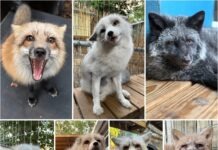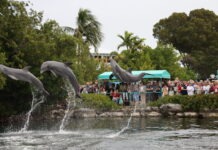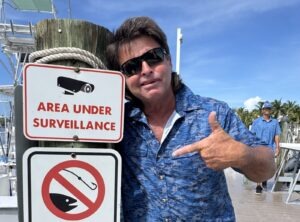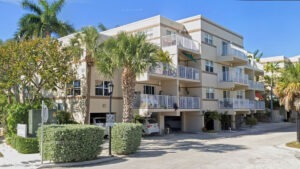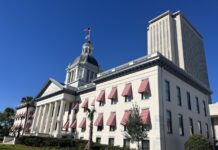A small flock of magnificent frigatebirds chasing each other just above the power lines next to the Key West Golf Course was the first species of the trip. Juveniles, I think, though there might have been an adult female or two in the group. The second, or the second species I managed to notice, was a white-crowned pigeon flying over the overpass near Naval Air Station Boca Chica.
It was a good start.
There were big puffy clouds in the sky and it didn’t look like there was much chance for rain.
I love the Keys with all my heart, but summer? Summer is a good time to get out for a spell.
To quote Peter Cetera, one of the poets laureate of the late yacht rock era, everybody needs a little time away. So when I had a last-minute road trip offer to get Mike Marrero’s minivan up to Arkansas, I jumped on it.
The mission on the first day was just to get the H-E-double-hockey-sticks out of the state of Florida. We’re both photographers, among other things, and we wanted to take a few days to travel through Georgia, Alabama, Mississippi and Arkansas, mostly taking back roads to places neither of us had been. But Florida? Both of us had taken a lot of pictures of and in Florida.
But even if you’re hell bent on something, you can still keep an eye out for birds and enjoy nature’s wonders. It doesn’t matter if you’re moving at 70 miles per hour.
I’d actually set a little goal for myself – see 50 bird species while driving out of the state, though I wasn’t sure how realistic a goal that was. I would probably cross paths with at least 50 species, but it was a question of how much attention you can pay while driving. Even during passenger shifts, there were text messages and navigation duties and playlists to shuffle through, not to mention the tendency to just space out and give into the meditative state that comes about during long stretches of highway.
The third bird I saw was a red-winged blackbird flying toward a set of date palms on Sugarloaf. The fourth was a double-crested cormorant swimming off a boat ramp in the Saddle Bunches. Except I don’t think there are any boat ramps in the Saddle Bunches. The thing about high-speed birding? You can’t pause to clarify things. So there probably wasn’t a boat ramp. There was definitely a cormorant, though.
I noticed a mourning dove in a snag on Summerland Key, then a (an?) Eurasian collared-dove on a wire above the Tom Thumb on Big Pine.
We passed the nesting platforms the U.S. Fish and Wildlife Service built on upper Big Pine for least terns, but no luck.
At some point I noticed I wasn’t seeing any rock pigeons (a.k.a. your basic park pigeons). Which was weird. They nest under the bridges and usually are seen sitting in big groups on the wires next to the bridges, but there were none so far on this ride.
White ibis flapping fast over the gatehouse at Bahia Honda. A white, mid-sized egret flew lazily over the pond at Ohio Key, and when I caught sight of the yellow feet I knew it was a snowy egret.
A ratty-looking turkey vulture, missing a couple primaries, rocked on the thermals over Grassy Key. We don’t have many TVs in the Keys during the summer, so it’s possible the bird was just midway through its annual molt, but it’s hard to say for sure.
A red-bellied woodpecker shot over the highway in Tavernier.
We took Card Sound Road, hoping for a roseate spoonbill in one of the salt ponds, but they were empty. On the railing of the Card Sound Bridge, though, the same railing Skink tied himself to in order to experience the full brunt of a hurricane in Carl Hiaasen’s “Stormy Weather,” an osprey sat thinking osprey thoughts.
We slipped out of Monroe County and the Keys without really noticing it.
We stopped at the Race Trac in Homestead, where the trees were filled with boat-tailed grackles making a racket with weird unwinding calls. I scanned the pavement for common mynas but didn’t see any.
We took Krome Avenue to avoid the chaos of Miami traffic, and passed the Miccosukee bingo palace. In the zone between there and the start of U.S. 27 we saw a black vulture sitting on a light pole. In the grassy median at the start of 27 there was a small flock of cattle egrets. On the transmission towers that look like giant robot skeletons along 27, the first anhinga, wings out, was taking in the sun.
Mike told me he saw a crow somewhere south of Belle Glade, but I told him that didn’t count. I had to see it. I saw one a couple miles later.
We followed the eastern edge of Lake Okeechobee. South of Pahokee we saw another big group of cattle egrets in a patch of literal scorched earth in a farm field, but among them were a half-dozen great egrets.
Just south of Okeechobee – the town, not the lake – a crested caracara was getting mobbed in mid-air by a group of red-winged blackbirds.
We flew under a pair of glossy ibis in – I don’t know, some place with a lot of cows? Further along U.S. 441 a swallow-tailed kite, one of the world’s most elegant fliers, drifted and flew in slow loops over a copse of dark trees.
The sun was starting to drop, but I caught sight of a great blue heron standing stock-still next to a creek, and a few miles later, on the grassy shoulder, just before the on-ramp to the Florida Turnpike, a small gaggle of wild turkeys.
We got up to speed with the rest of the traffic and cleared the Orlando sprawl, heading toward the Georgia border. In the last of the light over the Florida Turnpike, a hawk I couldn’t identify.
Twenty-one species, if you don’t count the hawk. And we’d only made it to Gainesville that day. But the next morning, in the last bit of Florida, a sandhill crane in the fields and a wood stork flying over the road. It wasn’t 50 species, but there was a lot more driving to come.










